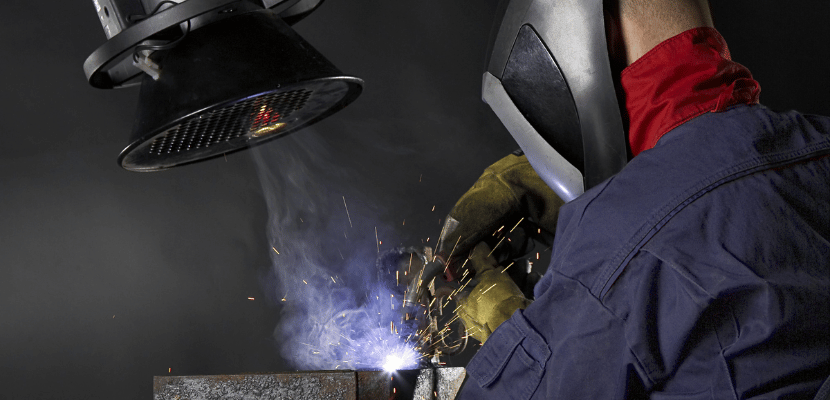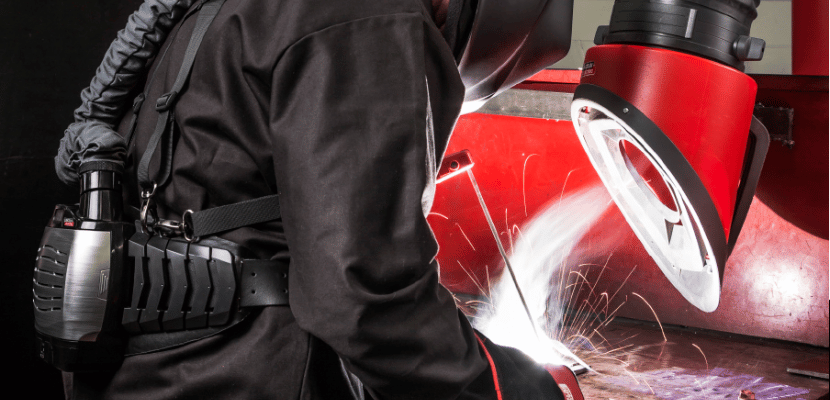Why Weld Fume Extraction Is So Important
Clean Air Industries
on
June 10, 2023

You might not think much about the air you breathe. But what you might not know is that welding can produce fumes that are harmful to your health. That’s why it’s important to have a welding fume removal system in place.
A welding particulate removal system eliminates the fumes and smoke produced by welding operations and protects workers from the hazards of exposure to those fumes. If you’re a welder, it’s important to understand the dangers of welding fumes and take steps to protect yourself from them.
What is Welding Fume?
Welding fumes are created when metals are welded together. The fumes contain several dangerous chemicals, including lead, mercury, chromium, and cadmium. Exposure to these fumes can cause several health problems, including cancer, respiratory problems, and damage to the nervous system.
That’s why having a good weld smoke extraction system is crucial. It’s not enough to vent the fumes to the outside world. You need a system that captures and filters all the dangerous chemicals in the fumes. This is the only strategy to ensure your workers are safe from the dangers of welding fumes.
The Dangers of Welding Fumes
Welders often breathe in weld fumes without realizing the dangers they’re facing.
Weld fumes can be particularly dangerous for welders who don’t have proper welding fume suction equipment. Inhaling weld fumes can lead to serious health problems, including lung cancer.
That is why having welding fume extractors are essential in the workplace. A good welding air quality system will remove welding fumes from the air, ensuring welders can breathe safely.
Several different welding exhaust systems are available on the market, so choosing one that’s right for your needs is important.
Make sure to research and choose a system that effectively removes welding fumes from the air. By removing these fumes from the work area, you’re protecting the health of your welders and ensuring they can work safely and comfortably.
Domestic and International Standards for Welding Fume Removal

There are domestic and international standards for controlling weld fumes, and your weld fume extraction system should meet or exceed these standards. The Occupational Safety and Health Administration (OSHA) is the regulating body in the United States, and have established standards related to welding, cutting and brazing. This is to ensure that the fumes are filtered as effectively as possible and that your safety is always the top priority.
Types of Welding Fume Removal
You should be aware of types of weld fume extraction systems. It’s important to consider whether you’re using manual welding or robotic welding, the size of your workspace, and the specific hazards associated with a particular job. Below, are the most popular weld fume extraction systems:
- Portable or mobile fume extraction systems are small and easy to move between workspaces. Portable fume extractors (also known as weld fume vacuums) are great for localized welding operations and can be set up quickly to extract fume before it has a chance to spread.
- Stationary fume extractors: Not only does it keep your workspace safe in a fixed spot, but it also helps improve the air quality so you can breathe easier, as well as helping reduce unpleasant odors that come with working with some materials.
- Extraction arms: These are fixed systems with an arm extending over the work area and use compressed air to capture fumes as they rise up. This type of system is best for larger operations where a lot of welding occurs simultaneously.
- Centralized fume extraction systems are larger systems that simultaneously capture fumes from multiple welding stations. They’re perfect for factories with a lot of daily welding activity.
No matter the type of system you choose, it’s important to ensure that it has all the necessary components—including filters—to prevent hazardous particles from entering your breathing air
Welding Fume Removal Solutions for the Workplace
When it comes to welding fume removal, you have a few options. The first is local exhaust ventilation (LEV), which can draw hazardous fumes away from the work area. However, this only works if the equipment is set up correctly and properly maintained.
Another solution is an enclosure such as a weld cell or welding booth, which would completely close off the space to isolate the welding process from the rest of your workspace. This option may be more practical in certain settings because LEV requires a large amount of air movement and may only be feasible with certain constraints.
You’ll also want to make sure that you’re investing in personal protective equipment, such as proper welding helmets, respirators and safety glasses, for anyone working with the welding process – this way, any fumes that may remain can be filtered out before they enter their lungs or eyes.
And finally, make sure you stock up on air purification systems that can remove toxins like ozone, formaldehyde, and other volatile organic compounds (VOCs) in your workspace atmosphere. Doing so will help ensure that your welding environment is safe and clean for everyone who spends time there.
Benefits of a Good Welding Fume Extraction System

Welding smoke extractors are designed to keep people safe, but their benefits go beyond this. A good welding fume removal system can provide several other benefits, including better air quality and productivity.
The air quality of the workplace will be improved since welding fumes are removed from the environment before they have a chance to accumulate. Removing these contaminants will reduce the risk of health problems associated with breathing them in. In addition, fume extractors can also filter out smoke and dust particles which can also cause health problems.
In terms of productivity, having a fume removal system for welding in place increases welders’ visibility, making it easier for them to do their job accurately and quickly. With proper ventilation and smoke removal, welders will be able to breathe much more clearly which will lead to a happier, healthier, and more efficient workplace. With a good welding fume removal system, there is no need for welders to take multiple breaks, and this helps increase productivity levels for the whole team.
Conclusion
In short, welding smoke and fumes are dangerous, and welding fume extraction is important. If you’re welding without proper ventilation, you’re putting yourself at risk for serious health problems during daily welding processes. Welding air purification systems can help protect you from these dangers, and they’re worth the investment.
- Category: Uncategorized
- Tag: welders, welding, welding safety
